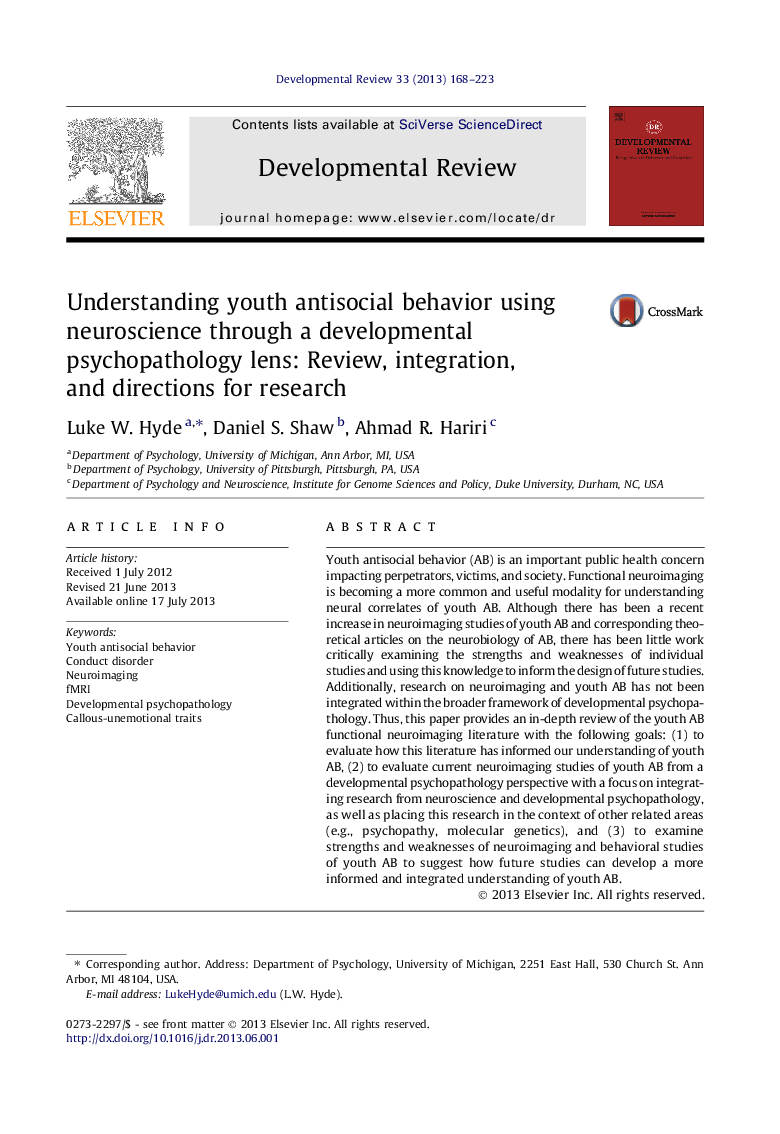| Article ID | Journal | Published Year | Pages | File Type |
|---|---|---|---|---|
| 353492 | Developmental Review | 2013 | 56 Pages |
•We evaluate neuroimaging studies of youth antisocial behavior (AB).•We examine these studies from a developmental psychopathology standpoint.•Differences in amygdala and prefrontal cortex functioning are correlated with AB.•Details of studies (e.g., fMRI task, type of AB measured) impact results.•There is some evidence for two subgroups of youth based on neural reactivity.
Youth antisocial behavior (AB) is an important public health concern impacting perpetrators, victims, and society. Functional neuroimaging is becoming a more common and useful modality for understanding neural correlates of youth AB. Although there has been a recent increase in neuroimaging studies of youth AB and corresponding theoretical articles on the neurobiology of AB, there has been little work critically examining the strengths and weaknesses of individual studies and using this knowledge to inform the design of future studies. Additionally, research on neuroimaging and youth AB has not been integrated within the broader framework of developmental psychopathology. Thus, this paper provides an in-depth review of the youth AB functional neuroimaging literature with the following goals: (1) to evaluate how this literature has informed our understanding of youth AB, (2) to evaluate current neuroimaging studies of youth AB from a developmental psychopathology perspective with a focus on integrating research from neuroscience and developmental psychopathology, as well as placing this research in the context of other related areas (e.g., psychopathy, molecular genetics), and (3) to examine strengths and weaknesses of neuroimaging and behavioral studies of youth AB to suggest how future studies can develop a more informed and integrated understanding of youth AB.
